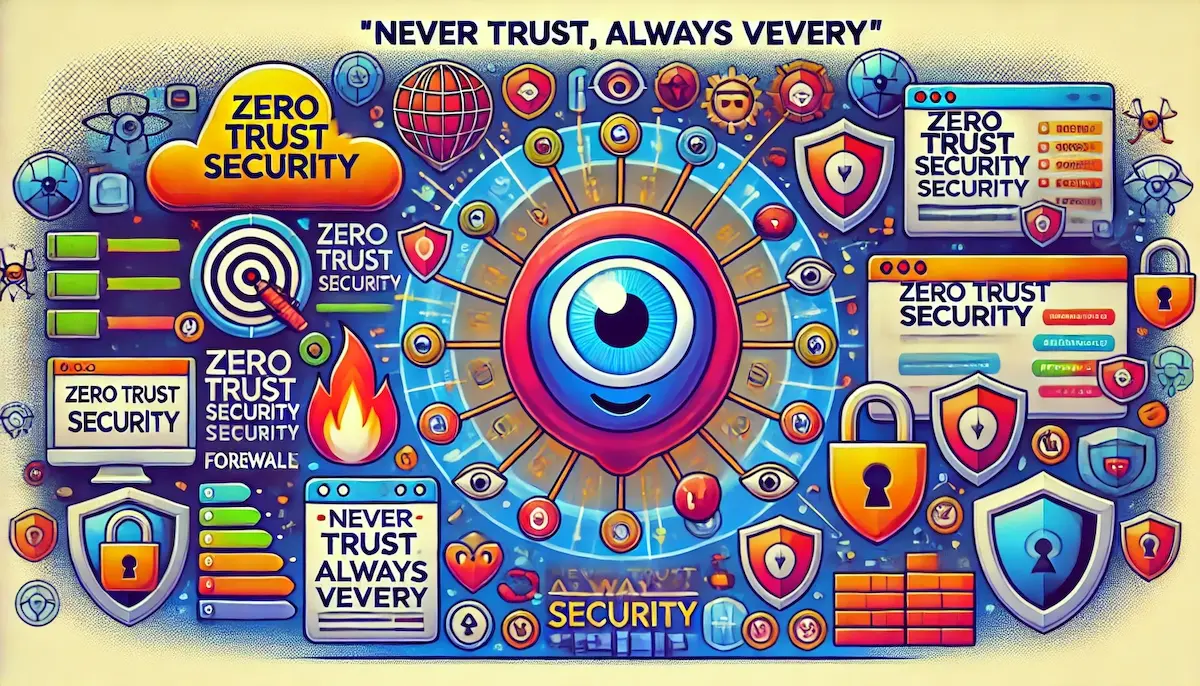Zero Trust Security is a modern cybersecurity framework that shifts the traditional approach to security by assuming that threats can come from both outside and inside the network. It operates on the principle of “never trust, always verify,” requiring strict verification of every person and device attempting to access resources on a network, regardless of whether they are inside or outside the network perimeter.
What is Zero Trust Security?
Zero Trust Security is a comprehensive approach to network security that focuses on continuously validating every stage of a digital interaction. Unlike traditional security models that trust users and devices once they are inside the network, Zero Trust assumes that breaches are inevitable and constantly monitors for potential threats. This framework minimizes risks by verifying every access request as though it originates from an open network.
Core Principles of Zero Trust Security
Verify Explicitly
Zero Trust requires rigorous authentication and authorization of every user and device. This involves using multiple data points such as user identity, device health, location, and data classification to make informed access decisions.
Use Least Privilege Access
Access rights are granted based on the principle of least privilege, meaning users and devices only have access to the resources they need to perform their tasks. This minimizes potential damage if a user or device is compromised.
Assume Breach
Zero Trust operates under the assumption that the network has already been compromised. This mindset drives continuous monitoring, logging, and validation of all activities to quickly detect and respond to threats.
Components of Zero Trust Security
Identity and Access Management (IAM)
IAM solutions are crucial for Zero Trust as they manage and control user access to resources. This includes strong authentication methods such as multi-factor authentication (MFA) and single sign-on (SSO), ensuring that only authorized users can access critical resources.
Endpoint Security
Endpoint security involves protecting devices that connect to the network, such as laptops, smartphones, and tablets. This includes using tools to ensure devices meet security standards before granting them access, and continuously monitoring their status to detect any suspicious activity.
Network Segmentation
Network segmentation divides the network into smaller, isolated segments, each with its own access controls. This limits lateral movement within the network, containing potential breaches and preventing attackers from accessing multiple resources.
Continuous Monitoring and Analytics
Zero Trust relies heavily on continuous monitoring and real-time analytics to detect and respond to threats. This involves collecting and analyzing data from various sources to identify unusual behavior, unauthorized access attempts, and other security incidents.
Data Security
Protecting data is a fundamental aspect of Zero Trust. This includes encrypting data both at rest and in transit, implementing data loss prevention (DLP) strategies, and ensuring that access to sensitive data is tightly controlled and monitored.
Benefits of Zero Trust Security
Enhanced Security Posture
By assuming that threats can come from anywhere and verifying every access request, Zero Trust significantly reduces the risk of data breaches and cyberattacks. Continuous monitoring and strict access controls provide a robust defense against evolving threats.
Improved Compliance
Zero Trust helps organizations meet regulatory requirements by enforcing strict access controls and maintaining detailed logs of all access and activity. This can simplify compliance with standards such as GDPR, HIPAA, and PCI-DSS.
Flexibility and Scalability
Zero Trust is adaptable to various environments, including on-premises, cloud, and hybrid setups. It can easily scale with the organization’s growth and evolving security needs, providing a consistent security framework across all platforms.
Reduced Attack Surface
By implementing least privilege access and network segmentation, Zero Trust reduces the attack surface, making it harder for attackers to move laterally and access multiple resources. This containment strategy limits the potential impact of any security breach.
Challenges in Implementing Zero Trust Security
Complexity
Implementing a Zero Trust framework can be complex and requires a thorough understanding of the organization’s network architecture, user roles, and access needs. It may involve significant changes to existing security policies and infrastructure.
Integration
Integrating Zero Trust principles with existing systems and technologies can be challenging. Organizations need to ensure that their current security solutions are compatible with a Zero Trust approach and that they can work together seamlessly.
Continuous Management
Zero Trust is not a one-time setup but requires ongoing management and monitoring. Organizations must continuously evaluate and update their security policies, monitor user and device activities, and respond to emerging threats.
Cost
Implementing Zero Trust can involve significant initial investment in new technologies, training, and ongoing maintenance. However, the long-term benefits of enhanced security and reduced risk of breaches can outweigh these costs.
Conclusion
Zero Trust Security represents a significant shift in how organizations approach cybersecurity. By assuming that threats are always present and continuously verifying every access request, Zero Trust provides a robust framework for protecting sensitive data and resources. While implementing Zero Trust can be challenging, its benefits in terms of enhanced security, compliance, and flexibility make it a critical strategy for modern cybersecurity.
Blockfine thanks you for reading and hopes you found this article helpful.
